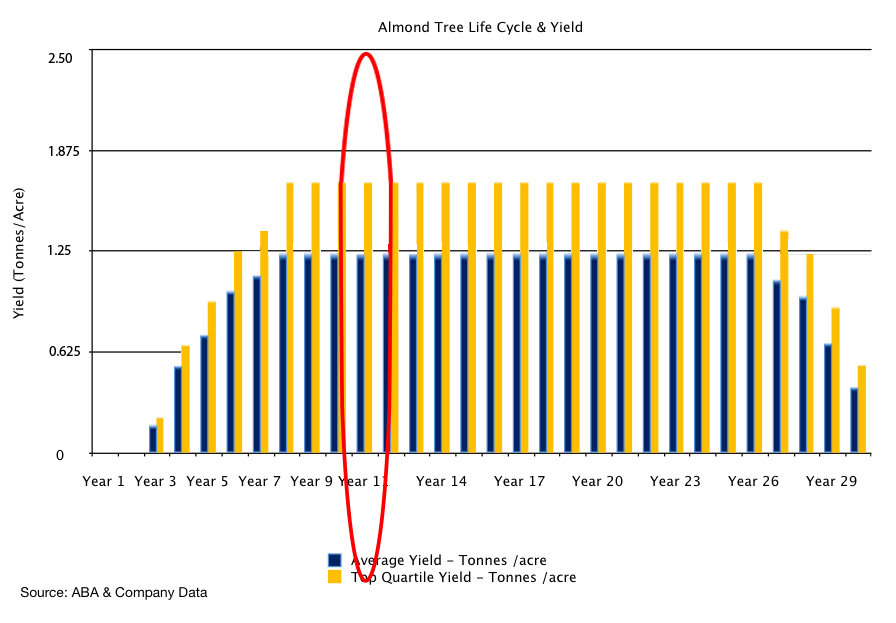The Winter Orchard
The cool winter mornings are perfect for both the sleeping orchard and the developing buds. Ben Brown, Select Harvests GM Horticulture, explains how the buds develop in winter.
The almond is a deciduous tree which reaches full bearing five to six years after planting. The flowers are a beautiful white / pale pink and have five petals. Almond trees grow best in warm, dry summers and mild, wet winters and the tree buds have a chilling requirement of 300 to 600 hours below 7.2 °C to break dormancy.

Almond trees are dormant over the colder winter period, around May to July in Australia.
Blossom usually occurs from late July to early September. At the start of blossom in almond orchards, you will often see alternate rows in bloom. This is because almonds are not self fertile, so there are always 2-3 varieties interplanted in an orchard. Bees are used to cross-pollinate the blossom.
Following petal fall, the leaves, new shoots and fuzzy greyish-green fruit begin to grow rapidly. This normally occurs from September to December. The hulls which cover the growing nuts continue to mature and harden and toward the end of this period the kernel begins to increase in weight while maturing.
Once the fruit has finished growing, the hull begins to split during summer, from early January. Over the next month the split widens and opens further. The almond shell is now visible through the split in the hull, and the nut itself begins to dry. Eventually, the junction between the stem of the whole fruit and the tree weakens and the fruit is ready for harvest.
Harvest occurs between February and April, when the nut is at an acceptable moisture level. Mechanical harvesting requires orchard floors to be clear of large weeds and swept of all foreign material. Shakers are used to vibrate the tree trunk, so the fruit (hull, shell and nut) falls to the orchard floor. After drying, they are swept into rows and picked up ready for storage.
The first step in processing almonds is to remove the hull and shell or hull only. This is known as either hulling and shelling or cracking. Some Almonds are value-add processed and supplied as slivered, sliced, diced, split, left whole or ground for almond meal/flour depending on application.
